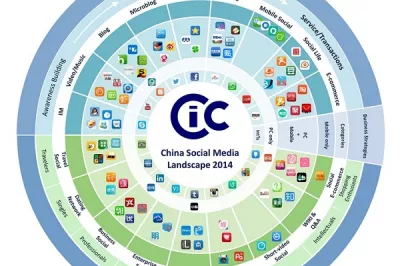Financial Inclusion in China: Will Innovation Bridge the Gap?
In the past ten years, China has made great progress in financial inclusion, thanks to conducive policies, strengthening of the banking sector, and innovation. China’s policies from the State Council, China Banking Regulatory Commission (CBRC) and People’s Bank of China (PBOC) to commercialize its banking sector and promote government to person transfers have been particularly effective. As a result, Chinese banks now serve over 60% of adults and have expanded outside of cities with 108,000 bank branches in rural areas. The Postal Savings Bank of China alone has 39,000 branches serving 400 million clients, and in 2012, 96% of China’s townships had access to a bank branch. Many banks have started to serve small and medium enterprises (SMEs) and lending to these businesses has increased by over 30% between 2006 and 2011.

Despite this progress, is too early for China to claim victory on the financial inclusion front. Several hundreds of millions people still do not have access to formal financial services, leaving China home to a huge unbanked population, second only in size to India. The rural poor, migrant workers and SMEs are some of the most underserved groups in the country, especially when it comes to access to credit. Rural areas are home to close to half the country’s population, but lending to these households only accounts for 5.4% of all outstanding loans in the country. As for SMEs, only a minority access bank loans and they often rely on informal channels to do so.
There are several barriers that prevent the large number of unbanked from accessing financial services.
- High costs of delivery, especially in rural areas;
- Technology, although widespread, has not yet been applied to solving the financial access problem for the poor or unbanked;
- China lacks a financial inclusion strategy, which has resulted in an uncoordinated approach from the many government agencies and institutions involved;
- Data on financial access and usage is limited, and tracking progress is difficult;
- There has been little research to date on what products or services unbanked customers in China actually need;
- With a predominantly public banking sector, government policies and regulations do not always foster the expansion of financial inclusion on a commercially sustainable basis.
Despite these challenges, there are also great opportunities that could offer a breakthrough in bridging the gap between the unbanked and the banked populations in China. As highlighted in the newly published report, "China: A New Paradigm in Branchless Banking," technology and innovation hold great promise for deepening financial access in the country. Branchless banking could significantly increase the ability of banks and non-bank actors to deliver services to hard-to-reach segments of the population. Right now, we are watching several developments closely for a positive impact on financial inclusion. These include applications that leverage the world’s fastest growing ecommerce market; an exponential growth of online and mobile phone-based payments; and pilots of bank agents, mobile banking, and self-service kiosks in rural areas.




Comments
Successful and resposnible
Successful and resposnible financial inclusion is possible only when basic physical infrastructure is aequately available in rural areas . If present level of inclusion is of any indication it is only a benchmark showing to the extent of saturation point for any inclusion. This basics hold good both for China and India with highly skwed economic growth at sub country level.,
Branchless banking and the technology hardly reach the bottom in the last mile ( M-Pesa In kenya- CGAP study) thereby widneing the inequality gap.
In China , the in eqaulity gap ( rich and poor, rurla and urban) assumes a major threat than poverty issue . Any technology based financial inclusion need a rethink
Dr Rengarajan
We are delighted to see CGAP
We are delighted to see CGAP’s efforts to move forward the discussion on financial inclusion in China. The barriers to furthering financial inclusion in China described in this blog post are insightful and spot-on. A few comments to add to the ongoing discussion:
- As a practitioner on the ground, I find there are still widely differing views of what is microfinance and the broader goals of financial inclusion. Many amongst the public (and even key decision-makers) are uncomfortable with interest rates charged above 10-15%. Some banks believe SME lending and micro lending are the same. Many key stakeholders (and broadly the public) believe that microfinance should only be for the rural poor. Loans that do not originate from a bank are still widely perceived as informal and part of a “shadow banking sector”. Consumer lenders often position themselves as providing loans to entrepreneurs. Importantly, most people are unclear of how financial inclusion will benefit society and there is a lot of skepticism amongst the public when many different actors utilize the terms for different purposes. Sector level actors have an important role to play to raise awareness and come to consensus regarding key definitions where debate exists.
- The term “social enterprise” is not well known in China. In other words, if a company is serving the bottom of the pyramid, it should not be making profit. If the company is a commercial company, it should maximize profit. As such, there has emerged a bifurcation in the Chinese microfinance industry between what are called “socially oriented microfinance players” and “commercially oriented players”. In fact, both types of institutions need to understand the role they play in financial inclusion, and the bifurcation is not a healthy trend for the industry.
- For the last 5 years, the approach to financial inclusion has been a “trickle-down” approach. SMEs and urban micro and small business lending have been the major beneficiaries. A major issue is that much of government and public policy makers does not distinguish in a clear way between micro, small, and medium sized lending. As such, policies are not sufficiently fine-tuned in a way to support the needs of financial institutions serving these different segments
- There are still much to be done in terms of access to finance, but in various areas in China, I have also found that over-lending, over-indebtedness, and relaxed credit standards, is becoming more and more prevalent (particularly in 1st and 2nd tier cities). This is a troubling trend. Private commercially-oriented actors and state-owned banks tend to chase government policy. In this way, policy support for microfinance can be a double-edged sword if not properly managed. Consumer protection and financial education will become very important
- The issue of the scale and location of demand for microfinance in rural areas is an important question which requires more research. Putting aside the regulatory issues, we find that the situation of rural demand is complicated by the prevalence and long-standing tradition of informal lending, policy-driven no-interest lending to rural families by credit cooperatives and other rural institutions, the lack of scalable rural businesses due to land ownership limitations, and socio-demographic changes. Amongst some of our microfinance partners, rural residents are returning to their villages for the sole purpose of getting lending, although their businesses are now in the township or city.
- Migrant workers, urban and small micro entrepreneurs, and rural families will require more than just credit, but the whole slew of innovation for financial inclusion and beyond – using the networks of microfinance institutions. We will need to see where credit ends and other interventions begin
Ed Wu
Managing Director
Planet Finance, China
Add new comment